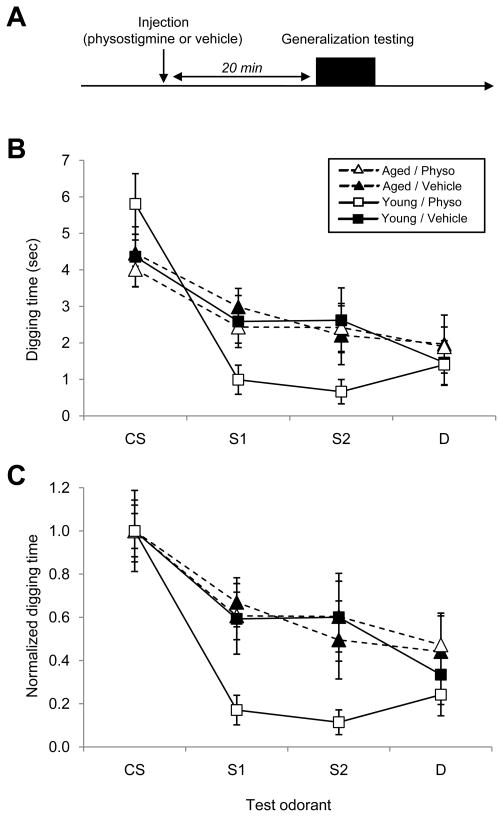Figure 1.
Acute injections of the acetylcholinesterase inhibitory physostigmine sharpen olfactory generalization gradients in young adult but not aged mice. A. Protocol. Either 0.05 mg/kg physostigmine or a like volume of plain 0.9% saline vehicle were injected intraperitoneally 20 minutes before the start of a ~20 minute training/testing regimen measuring odor generalization. Specifically, when trained to associate a conditioned odorant stimulus (CS) with reward, mice will dig in a dish scented with that CS odor as well as in dishes scented with structurally and perceptually similar odorants (S1, S2). In the training protocol used herein, broader generalization gradients are associated with impaired olfactory learning. Each mouse underwent the training and testing series no more than once per day. B. Generalization gradients measured in young adult (5 months old) and aged (19 months old) mice, after either physostigmine or vehicle injection. The injection of physostigmine significantly sharpened the generalization gradients of young mice, whereas it had no significant effect on the gradients of aged mice (see Results). C. Data from B normalized so that the mean response to the CS in each age group is unity. Error bars denote the standard error of the mean.

